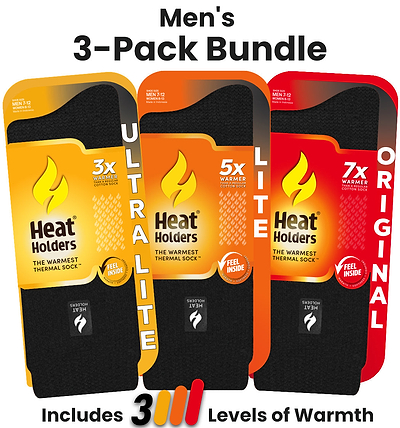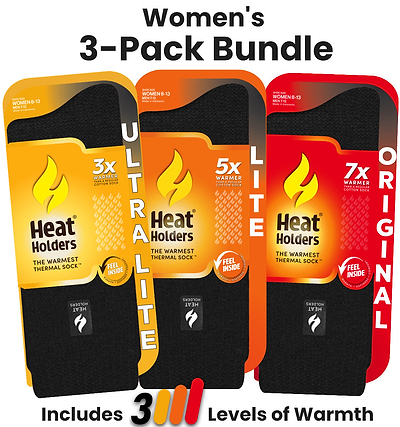As winter descends upon Colorado, the majestic landscape transforms into a snowy playground, attracting outdoor enthusiasts and winter sport lovers alike. However, to fully enjoy this season, it’s crucial to understand the right clothing choices that can keep you warm, comfortable, and protected from the elements. This article will provide a comprehensive guide on what to wear in Colorado in winter months.
Understanding Colorado's Winter Climate
Colorado's winter climate is unique, characterized by its diverse terrain and elevation changes. The state is known for its sunny days and cold nights, which can create challenges in choosing what to wear in Colorado in winter. The interplay between altitude and weather patterns means that a sunny morning can quickly turn into a snowy afternoon, making it essential for residents and visitors alike to be prepared for anything the day might bring.
Average Temperatures and Weather Conditions
Winter temperatures in Colorado can vary significantly depending on the region and elevation. In the foothills, the temperatures may average around 35°F (1.6°C) during the day and drop to the low 20s°F (-6°C) at night. However, as one ascends into the mountains, temperatures can plummet below 0°F (-18°C) with heavy snowfall. This stark contrast means that even a short drive from the city to the mountains can necessitate a complete change in attire, from light layers to heavy winter gear.
Additionally, weather conditions can change rapidly. It’s not uncommon to experience sunshine followed by a snowfall within the same day, so preparedness is key when selecting your winter wardrobe. Be sure to check a reliable weather forecast before heading out. Moreover, the state's elevation can also affect humidity levels, leading to dry air that can exacerbate the cold. This dry climate can lead to skin issues, making moisturizers and lip balms essential items to pack for any winter outing.

Unique Weather Phenomena in Colorado
Colorado is also known for certain unique weather phenomena that can impact winter experiences. One such occurrence is the "Chinook winds," which can lead to sudden and dramatic temperature increases, melting snow and sometimes causing challenging icy conditions. These warm winds can create a stark contrast to the surrounding cold, making it feel as if spring has arrived prematurely in certain areas, only to be followed by a return to winter weather shortly thereafter.
Another phenomenon to consider when thinking of what to wear in Colorado in winter is the high-altitude sun, which can be deceptively strong in winter. Thus, proper clothing and accessories, including protection from UV rays, are essential even on cold and snowy days. Skiers and snowboarders, in particular, should be mindful of the potential for sunburn, as the reflection off the snow can intensify UV exposure.
Additionally, Colorado's winter months often bring an increased likelihood of snowstorms, which can lead to stunning winter landscapes but also necessitate caution when traveling. Avalanche warnings are common in mountainous areas, and understanding the risks associated with winter recreation is crucial for safety.
Essential Clothing Items for Colorado Winter
When planning your winter wardrobe for Colorado, the key is to focus on essentials that provide warmth, adaptability, and protection against moisture. An effective winter outfit typically consists of layers that can be adjusted according to the conditions.
Importance of Layering
Layering is an essential when it comes to deciding what to wear in Colorado in winter. It allows you to adapt to changing temperatures and activity levels effectively. A typical layering system consists of three main components:
-
Base Layer: This layer is worn closest to the skin and should be moisture-wicking to keep sweat away and maintain warmth.
-
Middle Layer: The middle layer provides insulation. Fleece or down jackets are great options to trap body heat while remaining lightweight.
-
Outer Layer: A waterproof and windproof jacket serves as the final barrier against the elements and protects against snow and wind.
Choosing the Right Materials
Selecting the right materials for your winter clothing cannot be overstated. Synthetic fabrics like polyester or blends with spandex are ideal for base layers due to their moisture-wicking properties. For insulating layers, materials like fleece or down are excellent choices, providing warmth without bulkiness. Lastly, the outer layer should be made from breathable fabrics like Gore-Tex, offering waterproof features while allowing sweat to escape.
Additionally, it’s advisable to avoid cotton as it retains moisture and can lead to chilling when wet. Instead, consider merino wool for your base layer; it offers natural temperature regulation and odor resistance, making it a favorite among outdoor enthusiasts. Furthermore, investing in high-quality thermal socks can make a significant difference, as cold feet can quickly ruin an outdoor adventure. Look for socks made from a blend of wool and synthetic fibers to ensure both warmth and moisture management.
Accessories also play a crucial role in winter comfort. When thinking of what to wear in Colorado in winter, don’t forget to include a warm hat, gloves, and a scarf in your winter gear. A significant amount of body heat is lost through the head, so a well-insulated hat can keep you warmer overall.
Gloves should be insulated yet dexterous, allowing you to perform tasks without exposing your skin to the cold. A scarf not only adds an extra layer of warmth around your neck but can also be pulled up over your face during windy conditions, providing additional protection from the elements.

Footwear for Snowy and Icy Conditions
The type of footwear you choose can significantly impact your overall comfort and safety during Colorado winters. Proper winter boots will keep your feet warm, dry, and protected while navigating snowy landscapes.
Insulated Boots
Insulated boots are a must-have for any winter wardrobe. Look for boots that offer at least 200 grams of insulation to provide adequate warmth. Features such as waterproof materials, sealed seams, and adjustable cuffs are crucial for keeping snow out and heat in.
It’s also beneficial to try on boots with thicker socks to ensure a proper fit, allowing for insulation while preventing circulation issues. Additionally, consider boots with moisture-wicking linings that help manage sweat, keeping your feet dry even during vigorous activities. Some models also incorporate breathable membranes that allow for ventilation without compromising waterproofing, which is essential for maintaining comfort during long hours outdoors.
Traction and Slip-Resistance
In addition to insulation, traction is paramount when selecting winter footwear. Look for boots with rubber outsoles designed for grip on icy surfaces. Vibram soles, for instance, are known for their slip-resistant properties. Many boots also offer added traction features, such as built-in spikes or a rugged tread pattern.
Keep in mind that certain terrains may require specific footwear, such as snowshoes for deep snow or crampons for icy conditions. Always assess your intended activities and terrain when choosing footwear. Moreover, consider the weight of the boots; lighter options can enhance mobility and reduce fatigue during extended wear.
Accessories for Warmth and Protection
Accessories are often overlooked, but they play a crucial role in what to wear in Colorado in winter. Investing in quality accessories can make a significant difference in maintaining warmth. Not only do they enhance your overall winter wardrobe, but they also provide essential protection against the elements, allowing you to enjoy outdoor activities without discomfort.
Hats, Gloves, and Scarves
10% of body heat is lost through the head, making a good winter hat essential. Look for hats made from merino wool or fleece that cover the ears to provide additional warmth. Similarly, gloves should be insulated and waterproof; mittens can provide extra warmth if you don’t require dexterity. Consider layering lightweight gloves underneath mittens for added protection on particularly frigid days. Additionally, some gloves come with touch-screen capabilities, allowing you to use your devices without exposing your hands to the cold.
A warm, thick scarf can help shield your neck and face from cold winds. Choose a material that is soft against the skin to ensure comfort. A scarf can also double as a face mask in harsh conditions. For added versatility, consider investing in an infinity scarf that can be wrapped multiple times for extra coverage or styled in various ways to match your outfit. Scarves made from merino wool or cashmere not only provide warmth but also add a touch of luxury to your winter ensemble.
Sunglasses and Sunscreen
While it may seem counterintuitive, wearing sunglasses in the winter is crucial due to the sun’s reflection off snow, which can lead to glare that strains your eyes. Choose polarized sunglasses for the best protection. Look for sunglasses with UV protection to shield your eyes from harmful rays, as snow can amplify exposure, leading to potential long-term damage.
Even in winter, sunscreen is not to be neglected. Apply sunscreen to exposed skin, especially on sunny days where UV rays are still at play, even if temperatures are cold. A lip balm with SPF is also advisable to protect against chapping and UV exposure. Consider using a moisturizer with built-in sun protection for your face, as the dry winter air can exacerbate skin issues. Remember, taking care of your skin in winter is just as important as in summer, as the cold can lead to dryness and irritation if not properly managed.
Dressing for Outdoor Winter Activities
Many people flock to Colorado for outdoor winter activities, and dressing appropriately can enhance your experience significantly. Whether you’re skiing, snowboarding, or hiking, you must know what to wear in Colorado in winter during these activities.
Skiing and Snowboarding Attire
If you plan on hitting the slopes, specialized ski or snowboard attire is ideal. Look for waterproof and breathable jackets and pants, usually equipped with insulation. Ski vests can offer additional warmth without restricting movement.
Consider wearing dedicated ski socks that provide warmth without bulk, ensuring a snug fit inside your ski boots. A helmet and goggles are essential for safety and protection against cold winds and flying snow, while a face mask or balaclava can serve to cover the face in extreme cold.
Hiking and Camping Gear
For winter hiking or camping, prioritize moisture-wicking base layers and insulated outer layers to handle the changing conditions. Waterproof pants are essential to keep dry during unexpected snow falls or wet ground conditions.
Don’t forget to carry extra layers while hiking, as temperatures can drop significantly as the sun sets. Having a portable water heater or thermos with hot beverages can provide warming relief on frigid adventure days.
Gear Up for Colorado Winters with Confidence
Check out Heat Holders® Base Layers, Jackets and Vests, Accessories, and (of course) our warm Thermal Socks for everything you need to brave those cold Colorado winters! Happy shopping!










